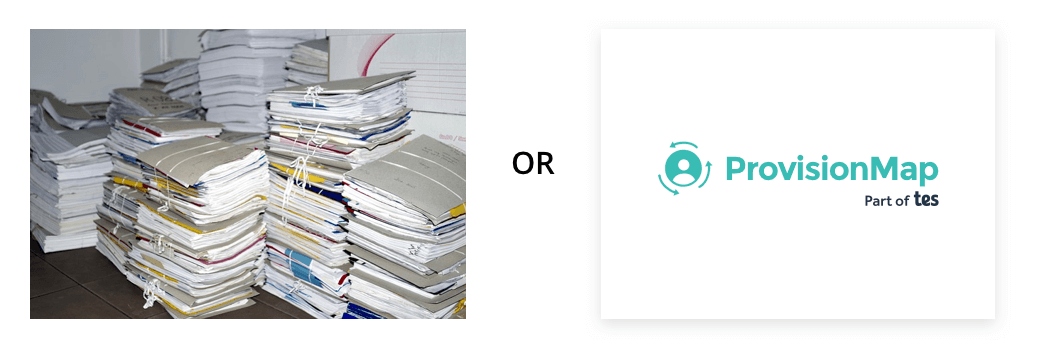What does an SEN file look like?

There are two uses of the phrase SEN file.
The first refers to the file that contains all a child’s information about their SEN and provisions in place. The second is the file kept by a SENCO ready for an OFSTED (or other) visit.
Student SEN files
A student file follows them through their phases of education usually sitting resident in the secondary placement once they leave. Since the Children and Families Act (CAFA 2014) made EHCPlans eligible up to the age of 25 the data retention guidelines have recently been changed to reflect that SEN information/files must also be retained until a child is 25+6 years (in other words 31 years old). Just as with safeguarding documentation original copies should be retained in the file even after scanning into any electronic storage system.
For more advice, look at the Information and Records Management Society’s retention guidelines for schools at www.irms.org.uk
What should that file contain?
Each SEN file you create or inherit should contain documents relevant to special educational needs and disabilities but should not be a duplicate of information already found in the pupil file.
Here is a list of the documents you should expect in a SEN file. Remember that it is essential to date everything:
- An index – even a simple sheet of lined paper at the front with a list of contents and their date is useful.
- Original letters from professionals and a copy of any resources or information booklets they provide (or an indication of where you can find them).
- A chronology of intervention or provision. This could be a list, provision map or a highlighted timetable.
- Copies of any learning plans and targets (pupil profiles or passports) with relevant comments by parents, pupils and professionals, plus signatures. Whilst the Code of Practice does not go as far as to say that an individual education plan (IEP) or similar must be created, it does state that a record must be made and retained in an easily accessible format.
- A record sheet with the results of diagnostic or psychometric assessment results. There is no need to keep the original test papers although it can be useful to hang on to most recent one so as to analyse differences.
- If the student has an education, health and care plan (EHCP), their file should contain copies of all issued documentation. It’s not essential to keep records of meetings but it is advisable: a note of agreed actions can be incredibly useful.
If you are asked for a SAR (Subject Access Request) for an SEN pupil, then ALL of this file needs to be copied and passed on to the relevant person.
SENCO SEN Files
If I only had a £1 every time this question is asked…
Every school will have it’s own priorities and ideas, but here are some basic ideas you might like to consider including in a SENCO file:
- Up-to-date analysis of attendance data (up to date does not mean burn the midnight oil, update it every three weeks or so and keep the most recent analysis)
- Analysis of behaviour data
- Analysis of academic achievement
- Evidence of interventions taking place and how effective these are along with a timetable of their delivery
- Records of the evaluation of the quality of teaching, learning and assessment
- Documented evidence of the work of governors and their priorities
- Pupil premium information – although be careful not to overlap with pupil premium information. The best way I’ve seen this illustrated is using a Venn diagram which might also include LAC information too.
- The numbers of pupils in each class/year with the type of needs and any adaptations to create personalised timetables. Again, very well illustrated using a Venn diagram.
- 2-4 case studies (optional but most SENCOs find they can be useful to focus their thoughts and make sure they don’t forget some really great things they’d like to point out)
- Feedback from pupils and parents
- Information on SEN continuing professional development (CPD) and its impact
- Staffing arrangements and details of any support services
It’s no secret that I used Edukey’s Provision Mapping software and I would print example costed provision maps for students and a variety of document from the reports centre along with the full provisions report which pretty much covered everything I might be asked in a meeting.
